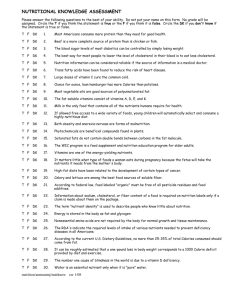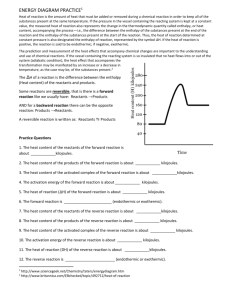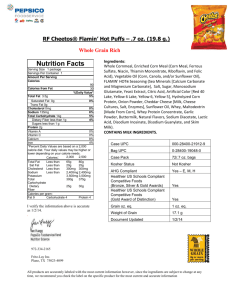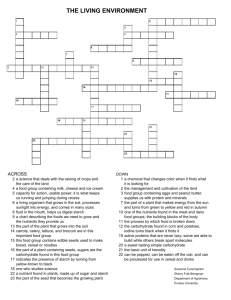Balancing energy in and out Nutrition Fact Sheet
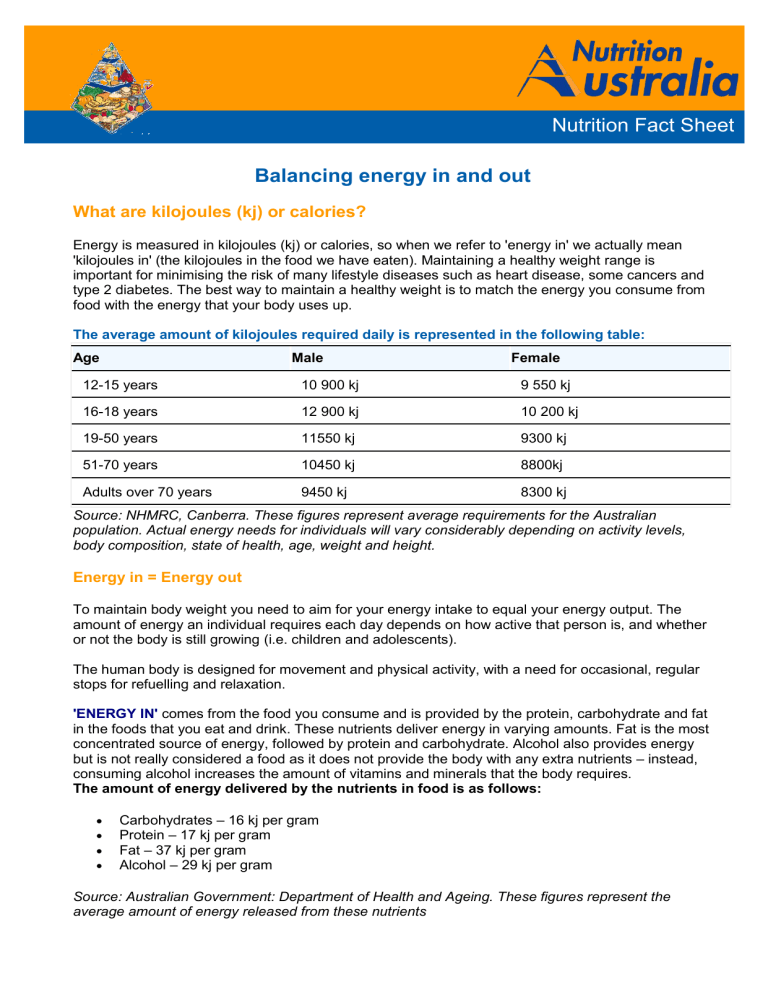
Nutrition Fact Sheet
Balancing energy in and out
What are kilojoules (kj) or calories?
Energy is measured in kilojoules (kj) or calories, so when we refer to 'energy in' we actually mean
'kilojoules in' (the kilojoules in the food we have eaten). Maintaining a healthy weight range is important for minimising the risk of many lifestyle diseases such as heart disease, some cancers and type 2 diabetes. The best way to maintain a healthy weight is to match the energy you consume from food with the energy that your body uses up.
The average amount of kilojoules required daily is represented in the following table:
Age Male Female
12-15 years
16-18 years
10 900 kj
12 900 kj
9 550 kj
10 200 kj
19-50 years
51-70 years
11550 kj
10450 kj
9300 kj
8800kj
Adults over 70 years 9450 kj 8300 kj
Source: NHMRC, Canberra. These figures represent average requirements for the Australian population. Actual energy needs for individuals will vary considerably depending on activity levels, body composition, state of health, age, weight and height.
Energy in = Energy out
To maintain body weight you need to aim for your energy intake to equal your energy output. The amount of energy an individual requires each day depends on how active that person is, and whether or not the body is still growing (i.e. children and adolescents).
The human body is designed for movement and physical activity, with a need for occasional, regular stops for refuelling and relaxation.
'ENERGY IN' comes from the food you consume and is provided by the protein, carbohydrate and fat in the foods that you eat and drink. These nutrients deliver energy in varying amounts. Fat is the most concentrated source of energy, followed by protein and carbohydrate. Alcohol also provides energy but is not really considered a food as it does not provide the body with any extra nutrients – instead, consuming alcohol increases the amount of vitamins and minerals that the body requires.
The amount of energy delivered by the nutrients in food is as follows:
Carbohydrates – 16 kj per gram
Protein – 17 kj per gram
Fat – 37 kj per gram
Alcohol – 29 kj per gram
Source: Australian Government: Department of Health and Ageing. These figures represent the average amount of energy released from these nutrients
'ENERGY OUT' refers to the amount of kilojoules burnt up by the body by ‘staying alive’ (which includes factors such as digestion, heart beat, breathing, etc) and by being physically active. For individuals, the level of energy expended daily depends on age, stage of growth and development, and usual daily activity levels.
Energy storage
What happens if you take in more energy than you need? The answer is simple - excess kilojoules will be stored as body fat.
The Best Energy Source
The body prefers to use carbohydrate for energy to fuel muscles and the brain. If there is insufficient carbohydrate provided in the food that you eat, your body will use fat for energy, and then, as a last resort, protein. Fat and alcohol have almost twice the energy content of carbohydrate and protein - it makes sense to consume these in moderation.
Produced by Nutrition Australia Victorian Division, August 2012. www.nutritionaustralia.org
© 2012. The Australian Nutrition Foundation (Victoria) Inc. t/a Nutrition Australia Victorian Division. All rights reserved.
